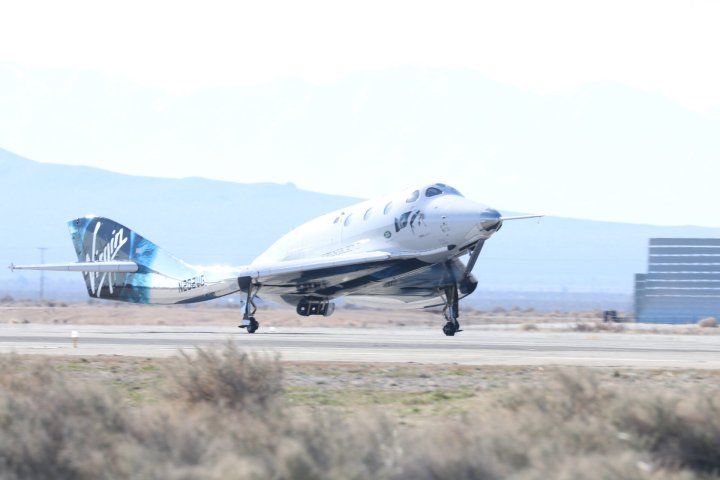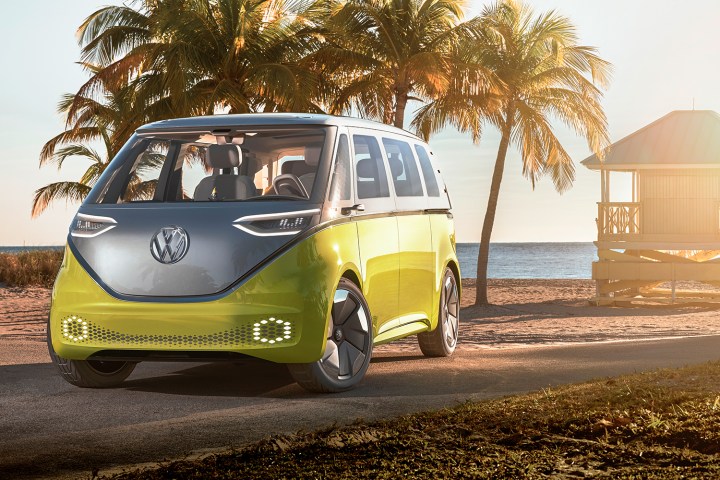Congratulations everyone, you’ve made it through a fifth of the 21st Century already. The 2020s are here, and with this brand new decade come new challenges and technologies that will change the way we live. In the past, Digital Trends has celebrated the passing of each year by issuing predictions for the year ahead, but for this New Year’s, we peered into our crystal ball to imagine what the coming decade will bring.
While our predictions might seem lofty and perhaps even pulled from science fiction, they’re all based on technologies either already available or in development right now. It’s not a question of if these will come to fruition, but when. So what tech will change your life this decade? Let’s take a look.
Space Exploration

The 2020s will mark the return of humans to space missions beyond the Earth’s orbit. There is the possibility that humans might not only set foot on the moon, but also on Mars within the next decade. Of the two, a return to the moon is far more likely — with humans establishing a permanent lunar settlement by the end of the decade.
NASA currently targets 2024 for the Artemis III mission that will put humans back on the lunar surface and a permanent settlement by 2028. However, humans could orbit the moon by the end of this year or early 2021. As for Mars, that’s much more difficult. While SpaceX has repeatedly stated it’s on target to put humans on Mars by the end of the decade, whether that’s even possible depends on the success of the company’s human-crewed lunar missions, which should happen in the mid-2020s. Regardless, humans are returning to space to stay this time. But it’s not just astronauts that will be in space anymore.
Space Tourism

The idea of space tourism is nothing new, and various companies have promised to make it a reality for about as long as humans have been in space. But in the 2020s, it will become a reality. Both Sir Richard Branson’s Virgin Galactic and the Jeff Bezos-backed Blue Origin will begin offering near-space flights in the early 2020s — but at a high price tag, somewhere in the range of $250,000 per person. SpaceX is targeting 2023 to fly Japanese billionaire Yusaku Maezawa and a group of artists around the moon. The cost is unknown, but Maezawa is likely paying millions (if not tens of millions) of dollars.
But Branson and Bezos have both publicly stated that they don’t want to limit spaceflight to the super-rich. And Elon Musk has also proposed plans for a system of rocket-based travel that could theoretically get you to any point in the world within an hour — all for the price of an economy airline ticket. While there’s reason to be skeptical of Musk’s proposal, it’s fairly likely that by the end of the decade a flight on a space-bound plane might cost little more than a first-class ticket.
The Rebirth of Public Transit
U.S. public transportation sucks. There’s no nice way to put it. The reason? Americans love their cars. In automobiles per capita, the United States ranks fourth. It also ranks fourth in terms of time citizens spend in congestion, too. But that’s not all: our increasingly sprawling metropolitan areas are giving birth to the “super commuter,” those of us traveling 90 or more minutes a day to work, whose numbers have skyrocketed in recent years. It’s time for America to get serious about public transit.
The 2020s should see several new bullet trains begin service across the country. Commuting via air will become affordable, and if companies like Uber have their way, you’ll likely be on one of these flights in just a few short years. But perhaps the most exciting is the Hyperloop. If everything goes right, we should have the first functioning Hyperloop system from Abu Dhabi to Dubai in the early 2020s, followed by other small projects throughout the decade. That’s pretty exciting.
Mass Automation

The worldwide labor force will have a reckoning this decade. Technology is now at a point where many tasks can be performed faster and more efficiently by robots. With the dawn of AI, these robots can operate themselves, further eliminating the need for humans in the process. With self-driving cars and drones, the cargo transportation industry will also increasingly automate itself. During the 2020s, automation will become the rule, not the exception — potentially putting a quarter of current jobs at risk of elimination by 2030.
This apparently inevitable job apocalypse has even become a 2020 election year campaign issue, ask Andrew Yang. But Yang won’t be the last. Expect to hear a lot more about this in the years to come. Either way, we’ll have to figure out just how much automation we’re willing to accept, and what to do with the millions that will lose their jobs as a result. It’s not an easy problem to solve.
The Last Mass-Produced Gas Vehicle

It seems like the automobile industry has been overselling the idea of electric cars for much of the 21st Century, and that’s pretty accurate. While the electric vehicle has been around for decades, it wasn’t until the 2010s that technology was able to produce an electric vehicle with a mass-market appeal — the Tesla. The company arguably sparked a massive push towards electrification, and likely so much so that by the end of the decade, an overwhelming majority of new cars sold will be all-electric.
By mid-decade, a majority of cars sold will either be hybrid or electric. At least one manufacturer, Volkswagen, hopes to be all-electric by 2026. Volvo hopes to be there much sooner, perhaps as early as 2021. By the end of the decade, the last gas-powered vehicle will likely have rolled off the assembly lines. But with all this electrification comes the question of how to keep all those cars charged up — which our current system would not be able to handle.
A Cure for Cancer and AIDS

We are so tantalizingly close to a cure for two of the most vexing diseases of the past several decades: cancer and AIDS. While we’ve been told numerous times over the years that a cure is near, we’ve only found successful ways to put certain types of cancer into into remission or simply hold AIDS at bay for a while — not an outright cure for either. But the 2020s may finally see a legitimate treatment for both diseases, potentially saving millions of lives in the process.
With cancer, a radical new treatment called CAR-T is showing great promise, and other companies are claiming similar success. With AIDS, Temple University and University of Nebraska researchers have successfully eliminated HIV-1 from the genomes of living animals. With this success, these two deadly diseases will likely be a thing of the past by decade’s end. And that’s not all — several other conditions may become much rarer, and those born in this decade will likely by and large make it into the 22nd Century healthier than aging generations before it.
Human Augmentation
We’re not talking about full-blown cyborgs here. But technologies are currently in development to extend human capabilities, even to those that may not have had them in the first place. Robotic limbs that can be controlled by thought will become much more commonplace, giving freedom back to amputees and paraplegics. Technologies that connect our brains to computers are in development is well, and will likely be available by mid-decade.
Computer chips may be embedded in our skin to allow us to identify ourselves, open doors (our own Drew Prindle’s already done it), and control all types of devices. It’s a pretty exciting thought, but could it also open up all kinds of questions as to when and what is acceptable when it comes to human augmentation.
Editors' Recommendations
- Why are so few people actually using 5G in the U.S.? Here’s what the experts say
- The future of sustainability: A look at the next evolution of environmental tech
- The Big Tech antitrust hearing is today. Here’s why it matters
- Because 2020’s not crazy enough, a robot mouth is singing A.I. prayers in Paris
- U.S. government and big tech want to use location data to fight coronavirus


